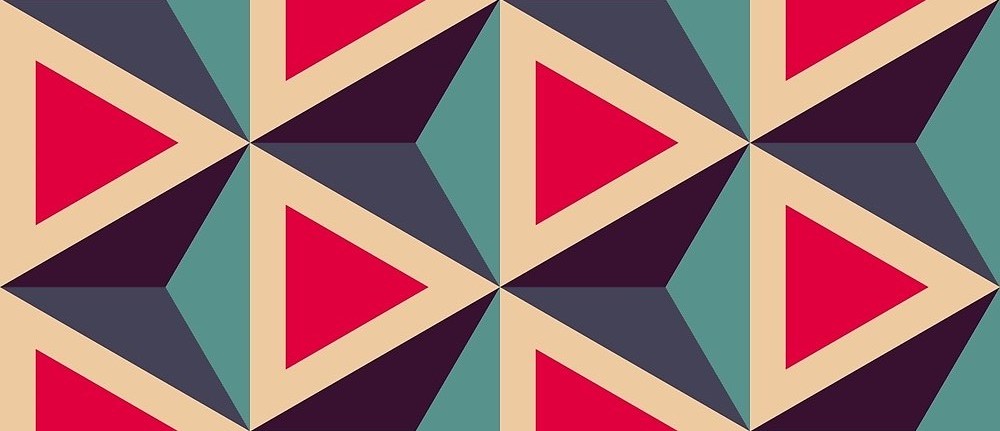Key Takeaways The same graphic design principles apply to computer screens documents and presentation graphics. It invites your audience to unknowingly tie certain individual elements together.

5 Basic Principles Of Graphic Design
Contrast is the.

. A seamless pattern is one that flows throughout without flaw in the beginning or end. CAHNRS COMMUNICATIONS Basic Design Principles. Principles Graphic Design Basic graphic design principles can be summarized in one word.
Repetition focuses on the same object being repeated. Its what signals to the person seeing your design that you did this with intentionality and its not just a bunch of ideas thrown together. The entire pattern is a single coherent unit.
Tagged as Graphic Design. Rhythm is a type of movement in art. If you use a stock template from your software.
Written by Gareth David. Associated with consistency repetition refers to the repeating of elements on a page. It is seen in repeating of shapes and colors.
There are 5 major graphic design principles. Alignment is one of the most basic but most important principles of design as it allows our eyes to see. Repetition is mainly used to make your design more consistent and easy to understand.
Using the same heading hierarchy throughout Using the same alignment throughout the project Using the same colors Using the same logos or images BRANDING. REPETITION Repeat visual elements of the design throughout the piece. Where contrast is about showing differences repetition is about subtly using elements to make sure the design is viewed as being part of a larger whole.
Whether it is a piece of advertisement a website design creating your own logo videos banners and other content pieces visual design principles and elements are essential to it. How to apply Repetition. Contrast helps to highlight and focus attention.
You should repeat some aspects of your design throughout the entire piece. Whether it is repeating the font color for all your headings or adding a repetitive background pattern to your design repetition not only makes a design consistent it adds visual interest. They may not seem sexy or exciting but theyre important aspects of effective graphic design.
5 Basic Principles of Graphic Design Alignment. The four graphic design principles are contrast repetition alignment and proximity CRAP. Elements throughout your design.
Repetition creates a sense of cohesion and consistency Alignment. Ever looked at a design and not know where to look at. These repeated elements can be used to add emphasis or consistency on certain areas or even just to make the graphic look nicer.
Patterns are made up from different components which are then repeated in the same way throughout the design. Repeating visual elements helps to unify and strengthen a piece. Follow for future tutorials news.
A series of bulleted points of interest in the same color type and size for a complete unit. They give you as the designer a kind of checklist to abide by. Repetition can also create rhythm in a design.
This applies to repeating fonts a certain type of bullet or graphical element a shape within your logo that you then carry into the rest of your design a spacial relationship or interesting layout. Pattern principle is also referred to how design elements are designed in a project and set a standard on it to easily communicate your ideas. Dont go using many different fonts throughout a layoutuse a maximum of three.
These principles will help do just that by simplifying the process. Repetition is simply the process of repeating elements throughout a design or several pieces of design collateral to give a unified look. Repetition of certain design elements in a slide or among a deck of slides will bring a clear sense of unity consistency and cohesiveness.
Alternating lights and darks also give a sense of rhythm. Contrast Repetition Alignment Proximity Focus here is on text. Repetition is important because its what makes a design unified and cohesive.
Repetition is a design principle in graphic design that essentially comes down to repeating elements on a page. In this video I am going to discuss the 6th key design principle and discuss Repetition as a design principal in Graphic Design. You can think of it as adding consistency to a design.
Consistency is the uniform use of an element or style and repetition involves surprise repeating the same elements or styles within a single composition or across multiple pages. Repetition Repetition duplicates the characteristics of similar elements to contribute to design consistency. Movement adds excitement to your work by showing action and directing the viewers eye throughout the picture plane.
Repetition strengthens a design by tying together otherwise separate parts and as a result creates. In this video I am going to discuss the 6th key design principle and discuss Repetition as a design principal in Graphic DesignEnjoyFor. Graphic design principles help designers create attractive effective and harmonious compositions.
The pattern in Graphic Design refers to a repetition of multiple graphic elements on your design working together to create an eye-catching and harmonious design.

5 Basic Principles Of Graphic Design
Basic Principles Of Repetition In Graphic Design Design Guide

Principle Of Repetition Pattern Visual Communication Design

Design Repetition Principles Of Alignment Symmetry In Graphics
Basic Principles Of Repetition In Graphic Design Design Guide

The Design Corner Principles Of Design
Basic Principles Of Repetition In Graphic Design Design Guide

Repetition Pattern And Rhythm Interaction Design Foundation Ixdf
0 comments
Post a Comment